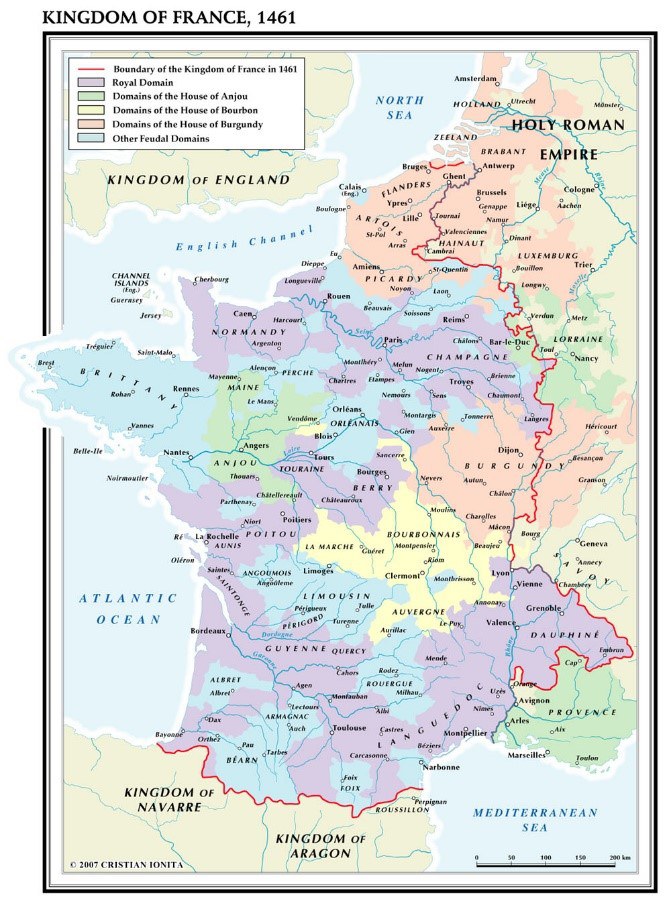The Creation of France
Chapter 9 : Provence, Anjou and Maine
Louis IX (canonised for his part in the seventh and eighth crusades) was a king of reforming zeal. His mother, Blanche, rather overshadowed his wife, Marguerite of Provence, whose sister, Eleanor, was married to Henry III of England. Provence was still an autonomous state, and Margaret and her three sisters all had claims to it. Beatrice (1229 – 1267), the youngest, who was unmarried at the death of her father, was named his heir.
In return for French support elsewhere, Pope Innocent IV agreed terms with Louis and Blanche, that he would approve the marriage of Beatrice of Provence to Louis’ brother, Charles (1227 – 1285), whom he had already invested with the county of Anjou in appanage. Charles went on to establish Angevin rule in Naples – the source of the later French kings’ claim to that territory.
Anjou and Maine descended to Charles I’s granddaughter, Margaret, who married her cousin, Charles of Valois, son of Philip III of France. Their son became Philip VI of France, and Anjou returned to the French crown. Raised to a duchy, Anjou and Maine were granted in appanage to Louis, son of Jean II ‘the Good’ of France, in 1360. This was followed by a grant of the duchy of Touraine in 1370.
Louis’ descendants included duke René (1409 – 1480) (father of Marguerite of Anjou, wife of Henry VI of England) and Marie, wife of Charles VII of France. On René’s death, Anjou passed to his nephew, Charles IV of Anjou, who, dying childless, willed his lands to his nephew, Louis XI of France.
Anjou was granted to François I’s mother, Louise of Savoy, and then on her death to his third son, who died childless. Following that, the duchy was held by the successive sons of Henri II, who all died without children. It then became the title of younger brothers of French kings but had no territorial significance.
Provence (held as noted above, by Charles of Anjou, in right of his wife, Beatrice) was within the kingdom of Arles (part of the original kingdom of Burgundy) and thus subject to the overlordship of the Emperor. Charles’ high-handed methods of enforcing his rights aggravated the local lords, and also his mother-in-law, Beatrice of Savoy. Provence remained a separate state, linked to Naples, until the death (probably by murder) of Joanna I, Queen of Naples and Countess of Provence. Six years after Joanna’s death, in 1388, parts of Provence became attached to the County of Savoy, also a separate territory, whilst the remainder descended to Joanna II of Naples, who named her distant relative, René of Anjou, as her heir. As with Anjou and Maine, Provence merged with the French crown under Louis XI.

